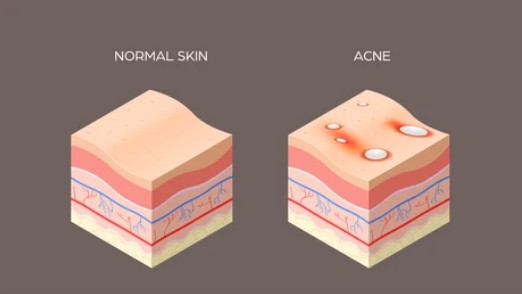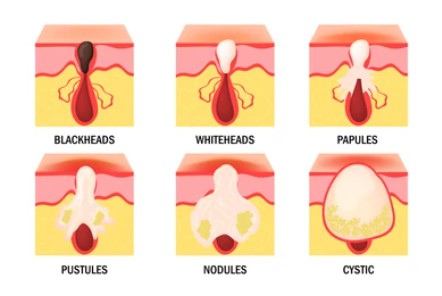Acne vulgaris Therapeutic Targets
Related Symbol Search List
Immunology Background
Available Resources for Study of Acne vulgaris Therapeutic Targets
Creative BioMart is dedicated to staying at the forefront of research in the field of acne vulgaris. We continuously update our portfolio of products and resources to provide researchers with the latest tools and information to drive progress in this important area of knowledge.
- Our diverse product portfolio includes recombinant proteins and other essentials for elucidating the mechanisms of acne vulgaris. We offer a wide range of products to suit the unique needs of every researcher.
- We have a team of experts in acne vulgaris research who are highly knowledgeable and experienced. They are committed to delivering tailor-made solutions to meet the specific needs of each researcher.
- In addition, we provide comprehensive resource support, including involved pathways, protein functions, interacting proteins, and other valuable information. These resources are designed to enable researchers to have a comprehensive understanding of acne vulgaris and ultimately enhance the impact of their research work.
Our Featured Products
- Recombinant Human RARA protein, His-tagged
- Recombinant Mouse RARA Protein
- Recombinant Rat Rara protein, His & T7-tagged
- Recombinant Chicken RARA
Whether you are studying acne vulgaris pathology, drug discovery or treatment development, Creative BioMart is here to support your research. We are committed to helping you achieve your scientific goals and make meaningful contributions to the field of acne vulgaris research. Contact us today to learn more about our products and resources.
About Acne vulgaris Therapeutic Targets
Acne vulgaris is a common skin disorder characterized by the formation of comedones (blackheads and whiteheads), papules, pustules, and, in severe cases, nodules or cysts. It occurs primarily in areas rich in sebaceous glands, such as the face, chest, and back. While various factors contribute to the development of acne, including hormonal imbalances, excessive sebum production, inflammation, and colonization of Propionibacterium acnes bacteria, targeting specific therapeutic targets can help manage and treat this condition effectively.
Pathophysiological Targets for Acne Treatment
- Hyperkeratinization
Acne is focused around the pilosebaceous unit, which includes a wide follicle connected to a multilobulated sebaceous gland and the hair follicle. Hyperkeratinization occurs in the follicular infundibulum, leading to sticky laminated corneocytes and an increased number and size of keratohyaline granules. Filaggrin, keratin (K)16, K17, and IL-1α are expressed in acne lesions. Most hair follicles in acne lesions are in the telogen and catagen phases. K79 and K75 are decreased in acne (comedo switch). Retinoid receptors are present in the isthmus.

- Sebum
Acne is a skin disease associated with the overproduction of sebum in the sebaceous glands. The production of androgen-dependent sebum leads to the differentiation of sebocytes and the discharge of sebum in a holocrine manner. The presence of acne produces lipase, leading to the conversion of sebum into free fatty acids and resulting in comedogenesis. The severity of acne is correlated with the rate of sebum excretion, and qualitative analysis has shown lower levels of linoleic acid in patients with acne.
Monounsaturated free acids, such as sapiens acid and oleic acid, are also relevant in acne and can promote inflammation and hyperkeratinization, leading to comedogenesis. Androgens play a significant role in acne pathogenesis, with increased 5α-reductase in the sebaceous glands and local production of androgens in the skin influencing the formation of acne lesions. Additionally, corticotropin-releasing hormone, thyroid hormone, and growth hormone also affect sebum secretion, while estrogen decreases sebum production.
In summary, acne is a complex disease involving sebogenesis, lipase production, free fatty acids, inflammation, and hormonal influences. Understanding these factors is crucial for effective management and treatment of acne.
- Wound Healing
Wound healing in acne can lead to various types of scarring, including atrophic, hypertrophic, and keloid scars. Factors such as pregnancy, hypertension, and genetic causes can influence the development of hypertrophic scars, while the intensity and duration of dermal inflammation play a role in the production of keloidal collagen and the formation of keloid scars. The process of wound healing in acne should be considered in the pathogenesis of the condition and future advances in acne therapy. Individual susceptibility may also influence the response to inflammation in acne and the development of scarring. Additionally, mechanical forces and tension in a wound can influence the development of hypertrophic scarring, and subcutaneous tissue sutures can be used in surgery to reduce tension and subsequent scar development.
- Upregulation of Gene Expression
Transforming growth factor-β (TGFβ), IL-6, MMP, IGF-1, and B cells are found in keloid/hypertrophic scar tissues. In atrophic scars, TLR4, IL-2, IL-10, tissue inhibitors of metalloprotease 2 (TIMP2), JUN, and TGFβ are elevated. Immunological responses are different between patients with and without scarring.
Updated Targeted Therapy Based on Acne Pathogenesis
Acne pathogenesis involves the sebaceous glands, infundibular keratinocytes, hair follicles, and endocrinological organs such as the adrenal gland, ovary, and brain. Novel targets for treatment should impact sebogenesis, keratinization, bacteria, inflammation, and scarring/wound healing. The skin's microbiome, particularly acne, plays a role in acne development through dysbiosis, inflammation, and immune dysregulation. Acne may also be considered an autoinflammatory disease and is associated with syndromes and endocrine disorders. Inflammasomes, cytokines such as IL-1β, TNFα, IL-6, and IL-8, and the adaptive immune response are implicated in acne pathogenesis, suggesting potential targeted therapies for the future.
Potential Targets for Acne Management
The main targets for treating inflammatory acne are inflammation, hyperkeratinization, sebogenesis, and wound healing.
- Treatments for inflammation include BPO, adapalene, antimicrobials, and biological agents targeting cytokines such as TNFα and IL-17.
- To regulate hyperkeratinization, IL-1 antagonists and retinoids like adapalene and trifarotene are effective.

- Reduction of sebum can be achieved with isotretinoin, hormonal therapies, and potentially, topical anti-androgen agents.
- For wound healing, corticosteroid tapes and surgery are common treatments for hypertrophic scars and keloids.
- Additionally, alternative therapies such as ectopeptidase inhibitors, dietary manipulation, and gene therapy are being explored for future acne treatment options.
References:
- Kurokawa I, Layton AM, Ogawa R. Updated Treatment for Acne: Targeted Therapy Based on Pathogenesis. Dermatol Ther (Heidelb). 2021;11(4):1129-1139. doi:10.1007/s13555-021-00552-6
- Cruz S, Vecerek N, Elbuluk N. Targeting Inflammation in Acne: Current Treatments and Future Prospects. Am J Clin Dermatol. 2023;24(5):681-694. doi:10.1007/s40257-023-00789-1

